Why Coyote Wanted People To Die For Their Own Good – A Caddo Nation Legend
Ellen Lloyd - AncientPages.com - Coyote is an adorable character one encounters in many Native American myths and legends.
Sometimes, Coyote is presented as a tricker, while the animal comes as a wisdom bringer on other occasions. Coyotes can teach, guide, or deceive depending on the circumstances.
“The basis of his character is the same in all myths; however, certain character traits of this extraordinary figure vary widely from region to region. Like real coyotes, mythological coyotes are usually notable for their crafty intelligence, stealth, and voracious appetite.
In some Native American myths, Coyote is a respected and admired cultural hero helping people; in others, he demonstrates many negative behaviors like arrogance, greed, and recklessness; in still others, he is a comic trickster character whose lack of wisdom gets him into trouble while his cleverness gets him back out. In some Native Coyote stories, he is even some sort of combination of all three at once.” 1
There are times when Coyote comes up with ideas that may sound reasonable at first, but pondering the consequences, one soon realizes the outcome is undesirable. It is what happened when Coyote suddenly suggested it would be best if all people died for their good.
In this influential legend from the Caddo Nation, a confederacy of several Southeastern Native American tribes, it is explained why Coyote, who is responsible for making death permanent, avoids people and is always hungry. His good intentions marked him for a lifetime.
As the Caddo Nation says, once a long time ago, when the world was new and people were immortal. They lived forever; no one died, and this led to problems. People had children, and soon, the world was crowded. It became apparent Earth could not sustain its population. People were hungry, and the chiefs gathered to discuss the problematic situation. Something had to be done because people lived in misery. A council was held, and various leaders offered proposals on how to deal with the problem.
“I think we should have people die, but only for a little while. After they have been dead for a time, let them come back,” one chief said.
A coyote pouncing in Yellowstone National Park. Credit: Yifei He - CC BY-SA 2.0
Coyote, who disagreed, stood up and said: “Oh, no. That is a terrible plan. If people come back after a little while, we will still have the same problem because no one will ever go away forever. I think death should be something that is for always.”
The other chiefs were dismayed with Coyote’s suggestion. They argued permanent death was unfair. People would miss their loved ones if they knew they would never return because they are dead forever.
Coyote’s plan was rejected, and the council decided people should only die for a little while and then come back to life again.
“The medicine men then went about building a grass house facing to the east. It was a special house in which the dead were to be brought back to life. “
We will put an eagle feather over the door,” said the chief medicine man, “and when somebody dies, the feather will fall off the door and turn red with blood. Then all the medicine men will know to come to the grass house and sing the spirit of the dead person back to life.”
When the people heard the new rules about death, they agreed that this was a good plan. They did not want their friends and family members to be gone forever. After a time, the feather over the grass house grew red with blood and fell off the door.
The medicine men all went into the grass house, and for about ten days, they sang to bring the spirit back to life. When they were done singing, the young man who had died was standing there in the middle of the grass house, alive again. Everyone who had known the young man rejoiced that he was alive among them once more.” 2
Coyote stood and watched as the medicine man brought people back to life, and he did not like this. To Coyote, it was simple. If there were people, there needed to be more food for everyone. Coyote was still convinced death must be permanent.
The next time, when the feather had fallen, Coyote followed the medicine men into the house. He sat there with the medicine men for days, listening to their songs to bring the spirit of the dead back.
Then something happened. As he sat there and listened to their songs, Coyote suddenly heard the sound of a whirlwind approaching the grasshouse. As Clayton Matt writes in his book Native American Mythology: Captivating Myths of Indigenous Peoples from North America, “Coyote knew that the spirit of the dead person was in this wind, and so when the wind approached the door of the house and tried to enter, Coyote jumped up and slammed the door shut, keeping the spirit outside.
When the spirit saw that the door of the grass house was shut, it moved on with the whirlwind and never came back. Because Coyote closed the door to the grass house that way, the spirits of the dead are never able to return to the land of the living. And when the people hear and see a whirlwind, they say, “Oh, that must be the spirit of someone who has just died. They are wandering and looking for a way to go to the land of the spirits.”
Though Coyote initially wanted death to be permanent, he was frightened by what he had done, and he ran away. He understood people would never see their loved ones again, and he felt everyone must despise him for his actions. “And ever since that time, he has been very cautious because he always fears that he will be punished for making death last forever, and he is always very hungry for no one will give him food anymore.” 2
Written by Ellen Lloyd – AncientPages.com
Updated Oct 9, 2023
Copyright © AncientPages.com All rights reserved. This material may not be published, broadcast, rewritten or redistributed in whole or part without the express written permission of AncientPages.com
Expand for referencesMore From Ancient Pages
-
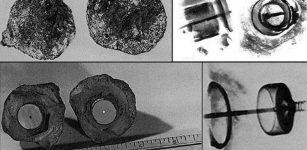 Mystery Of The Coso Artifact: A Spark Plug Or A Genuine Example Of Advanced Antediluvian Technology?
Ancient Technology | Sep 9, 2014
Mystery Of The Coso Artifact: A Spark Plug Or A Genuine Example Of Advanced Antediluvian Technology?
Ancient Technology | Sep 9, 2014 -
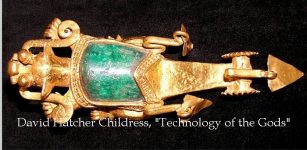 Prehistoric Heavy Machinery Of The Ancient Times Or A Piece Of Jewelry?
Ancient Technology | Sep 12, 2018
Prehistoric Heavy Machinery Of The Ancient Times Or A Piece Of Jewelry?
Ancient Technology | Sep 12, 2018 -
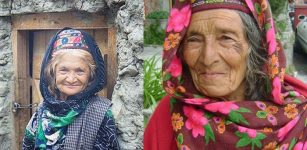 Mystery Of The Hunza People: Did They Really Live To 145 Years Of Age?
Civilizations | Jul 5, 2018
Mystery Of The Hunza People: Did They Really Live To 145 Years Of Age?
Civilizations | Jul 5, 2018 -
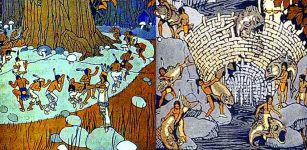 Yehasuri – Little People Of South Carolina Living In The Woods – Native Americans’ Version Of Leprechauns
Featured Stories | Feb 26, 2019
Yehasuri – Little People Of South Carolina Living In The Woods – Native Americans’ Version Of Leprechauns
Featured Stories | Feb 26, 2019 -
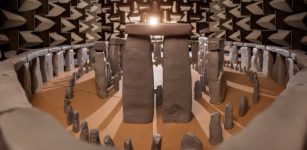 Ancient Sound Of Stones – Acoustics At Stonehenge Tested By Scientists
Ancient Technology | Aug 29, 2020
Ancient Sound Of Stones – Acoustics At Stonehenge Tested By Scientists
Ancient Technology | Aug 29, 2020 -
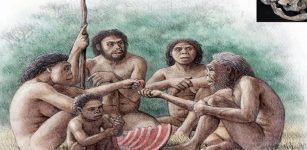 On This Day In History: Eugène Dubois Who Discovered Remains Of Java Man Was Born – On Jan 28, 1858
News | Jan 28, 2017
On This Day In History: Eugène Dubois Who Discovered Remains Of Java Man Was Born – On Jan 28, 1858
News | Jan 28, 2017 -
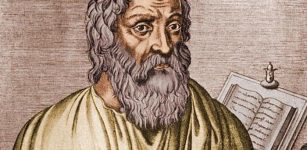 Hippocrates Didn’t Write The Oath, So Why Is He The Father Of Medicine?
Featured Stories | Oct 7, 2015
Hippocrates Didn’t Write The Oath, So Why Is He The Father Of Medicine?
Featured Stories | Oct 7, 2015 -
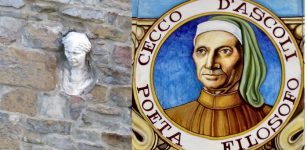 Mysterious La Berta – ‘Petrified’ Stone Head And The Curse Of Cecco d’Ascoli Who Was Burned At The Stake
Featured Stories | Jul 29, 2019
Mysterious La Berta – ‘Petrified’ Stone Head And The Curse Of Cecco d’Ascoli Who Was Burned At The Stake
Featured Stories | Jul 29, 2019 -
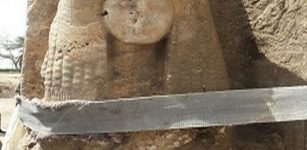 Archaeologists Unearthed Alabaster Statue Of Queen Tiye In Luxor, Egypt
Archaeology | Mar 24, 2017
Archaeologists Unearthed Alabaster Statue Of Queen Tiye In Luxor, Egypt
Archaeology | Mar 24, 2017 -
 Secrets Of The Assyrian Dream Book And Dream Interpretation In The Ancient Near East
Featured Stories | Aug 6, 2021
Secrets Of The Assyrian Dream Book And Dream Interpretation In The Ancient Near East
Featured Stories | Aug 6, 2021 -
 Ancient City Of Gordium, Gordian Knot And Skeleton In Tumulus Of King Midas
Civilizations | Sep 20, 2018
Ancient City Of Gordium, Gordian Knot And Skeleton In Tumulus Of King Midas
Civilizations | Sep 20, 2018 -
 Anne Neville – The Dramatical Story Of The White Queen
Featured Stories | May 22, 2020
Anne Neville – The Dramatical Story Of The White Queen
Featured Stories | May 22, 2020 -
 2,000-Year-Old Factory Producing Roman Fish Sauce Unearthed In Ashkelon, Israel
Archaeology | Jan 7, 2020
2,000-Year-Old Factory Producing Roman Fish Sauce Unearthed In Ashkelon, Israel
Archaeology | Jan 7, 2020 -
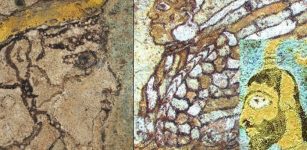 2,000-Year-Old Smuggled Glazed Bricks Sent Back To Iran By Switzerland
Artifacts | Dec 29, 2020
2,000-Year-Old Smuggled Glazed Bricks Sent Back To Iran By Switzerland
Artifacts | Dec 29, 2020 -
 Bezvodovka: Little Known Ancient Solar Observatory In Ukraine Reveals Its Secrets
Archaeoastronomy | Jan 4, 2017
Bezvodovka: Little Known Ancient Solar Observatory In Ukraine Reveals Its Secrets
Archaeoastronomy | Jan 4, 2017 -
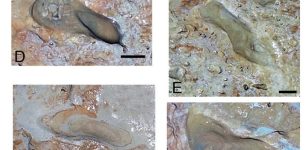 Enigmatic Footprints Reveal Humans Were In Spain 200,000 Years Earlier Than Previously Thought
Archaeology | Nov 11, 2022
Enigmatic Footprints Reveal Humans Were In Spain 200,000 Years Earlier Than Previously Thought
Archaeology | Nov 11, 2022 -
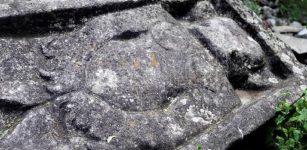 Pre-Hispanic Carved Stone Monuments Discovered On A Mountaintop In Puebla, Mexico
Archaeology | Jul 25, 2020
Pre-Hispanic Carved Stone Monuments Discovered On A Mountaintop In Puebla, Mexico
Archaeology | Jul 25, 2020 -
 Forseti: Norse God Of Justice And Lawmaker Who Lived In A Shining House
Featured Stories | May 1, 2016
Forseti: Norse God Of Justice And Lawmaker Who Lived In A Shining House
Featured Stories | May 1, 2016 -
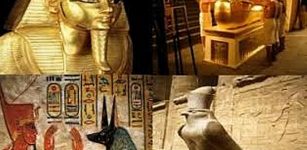 10 Fascinating Facts About Pharaohs
Ancient History Facts | Jun 21, 2016
10 Fascinating Facts About Pharaohs
Ancient History Facts | Jun 21, 2016 -
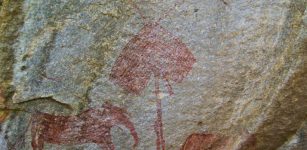 Hundreds Of Rock Paintings Found In Tanzania By Polish Archaeologist
Archaeology | Jul 11, 2018
Hundreds Of Rock Paintings Found In Tanzania By Polish Archaeologist
Archaeology | Jul 11, 2018


